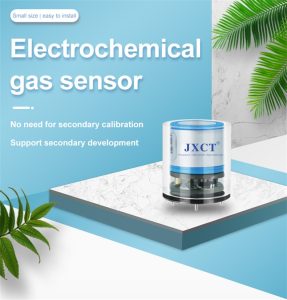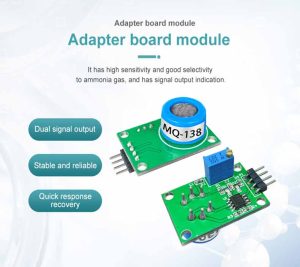Water scarcity and inefficient water management practices pose significant challenges to the agricultural sector. In recent years, precision irrigation techniques have gained prominence as a solution to optimize water usage and improve crop productivity. Gas sensors, with their ability to provide real-time data on soil moisture levels, have emerged as a key technology in revolutionizing precision irrigation in agriculture. This article explores the potential of gas sensors and their role in transforming water management practices for sustainable and efficient agriculture.
- The Need for Precision Irrigation: Traditional irrigation methods often involve excessive water usage, leading to water wastage, decreased crop productivity, and environmental degradation. Precision irrigation aims to address these issues by delivering the right amount of water, at the right time, and to the right location within a field. Gas sensors play a crucial role in achieving this precision by providing accurate and timely soil moisture data.
- Understanding Gas Sensors: Gas sensors used in precision irrigation systems consist of moisture sensors embedded in the soil. These sensors detect changes in soil moisture content, allowing farmers to monitor the water status of their crops in real-time. The data from gas sensors is transmitted wirelessly to a central control system, which analyzes the information and triggers irrigation events based on specific parameters set by the farmer.
- Benefits of Gas Sensor Implementation in Precision Irrigation: Gas sensors offer numerous advantages that make them a transformative technology in precision irrigation:
a. Water Conservation: By continuously monitoring soil moisture levels, gas sensors help farmers optimize irrigation schedules. This ensures that water is applied only when required, reducing water wastage and conserving this precious resource. Precision irrigation enabled by gas sensors can lead to significant water savings, especially in regions prone to water scarcity.
b. Increased Crop Productivity: Maintaining an optimal soil moisture level is crucial for crop growth and yield. Over-irrigation or under-irrigation can adversely affect plant health and productivity. Gas sensors enable farmers to precisely monitor and manage soil moisture, allowing for optimal growth conditions and maximizing crop yields.
c. Cost Reduction: Precision irrigation minimizes water and energy consumption, resulting in reduced operating costs for farmers. By avoiding unnecessary irrigation, gas sensors help lower water bills and energy expenses associated with pumping and distributing water. Additionally, improved crop productivity and yield contribute to increased profitability for farmers.
d. Environmental Sustainability: Water scarcity and environmental concerns call for sustainable agricultural practices. Precision irrigation enabled by gas sensors reduces the environmental impact of farming by conserving water resources and minimizing nutrient leaching. Furthermore, by promoting efficient water use, gas sensors contribute to the overall sustainability of agricultural operations.
- Integration of Gas Sensors with Other Technologies: Gas sensors can be integrated with other advanced technologies to further enhance precision irrigation:

a. Weather Forecasting: Integrating gas sensors with weather forecasting systems allows farmers to anticipate changes in weather conditions and adjust irrigation schedules accordingly. This integration ensures that irrigation events are aligned with actual crop water needs, considering factors such as rainfall and evaporation rates.
b. IoT and Automation: The Internet of Things (IoT) enables the connectivity of various agricultural devices and systems. Gas sensors, when connected to an IoT platform, can provide real-time data to automated irrigation systems. This integration allows for seamless control of irrigation events based on predetermined thresholds, reducing the need for manual intervention and improving efficiency.
c. Data Analytics and Machine Learning: Advanced data analytics techniques, such as machine learning algorithms, can process the vast amounts of data generated by gas sensors. By analyzing historical and real-time data, these algorithms can optimize irrigation schedules, predict soil moisture trends, and provide actionable insights to farmers for better decision making.
- Challenges and Future Directions: The adoption of gas sensors in precision irrigation still faces certain challenges:
a. Cost and Accessibility: The initial investment in gas sensor technology may be a barrier for small-scale farmers, especially in developing regions. Efforts should be made to develop affordable sensor solutions and provide technical support to ensure wider access and adoption.
b. Sensor Calibration and Maintenance: Gas sensors require regular calibration and maintenance to ensure accurate and reliable data. Farmers need access to calibration tools and training to properly manage and maintain the sensors.
c. Data Management and Interpretation: The large volume of data generated by gas sensors can be overwhelming for farmers. User-friendly interfaces, data visualization tools, and simplified analytics are essential for farmers to interpret the data effectively and make informed irrigation decisions.
d. Integration with Existing Infrastructure: Integrating gas sensors into existing irrigation systems may require infrastructure modifications and retrofitting. Developing compatible interfaces and protocols will ease the integration process for farmers.
Conclusion: Gas sensors have the potential to revolutionize precision irrigation in agriculture, offering benefits such as water conservation, increased crop productivity, cost reduction, and environmental sustainability. By enabling real-time monitoring of soil moisture levels, gas sensors optimize irrigation schedules and ensure efficient water usage. As technology continues to advance, integrating gas sensors with other technologies like weather forecasting, IoT, and data analytics will further enhance precision irrigation practices. Overcoming challenges related to cost, accessibility, and data management will be crucial in realizing the full potential of gas sensors in transforming water management practices for sustainable and efficient agriculture. By unleashing the power of gas sensors, we can move towards a more water-efficient and environmentally conscious future in agriculture.
 : +86 155 8830 2704
: +86 155 8830 2704 : jxdziot@gmail.com
: jxdziot@gmail.com
